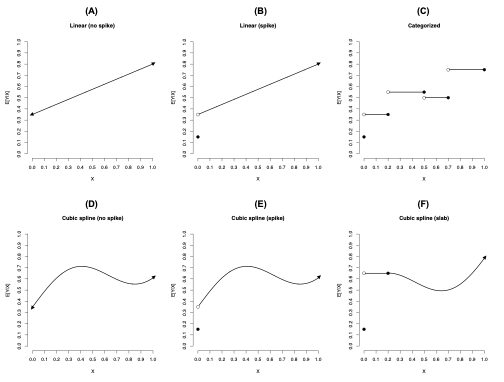Congratulations to associate professor Andrew Spieker on the publication of "The impact of different strategies for modeling associations between medications at low doses and health outcomes: a simulation study and practical application to postpartum opioid use." This article was published online ahead of print on June 21 in the American Journal of Epidemiology. Co-authors include recently retired associate Sharon Phillips, plus colleagues in Vanderbilt's Departments of Health Policy and Obstetrics and Gynecology. It reports on the simulation study conducted by Dr. Spieker and his collaborators "to assess the performance of several regression approaches to model the drug dose-response curve at low doses in a setting where no safe range exists" and to "demonstrate and empirically assess the use of these regression strategies in a practical scenario."

Figure S1 in the paper features graphical representations of various models.
Panels (A) and (B) illustrate the simple linear model in the absence and presence (respectively) of a spike effect. Panel (C) illustrates the case in which dose group is categorized (with zero included as a category). Panels (C) and (D) illustrate the natural cubic spline model in the absence and presence (respectively) of a spike effect. Panel (F) illustrates the “slab-and-spline” model that is piecewise constant over the low-dose range but otherwise shares the properties of a natural cubic spline. Of note, the models presented in panels (A) and (D) invoke the safe-dose assumption as no spike effect is present.